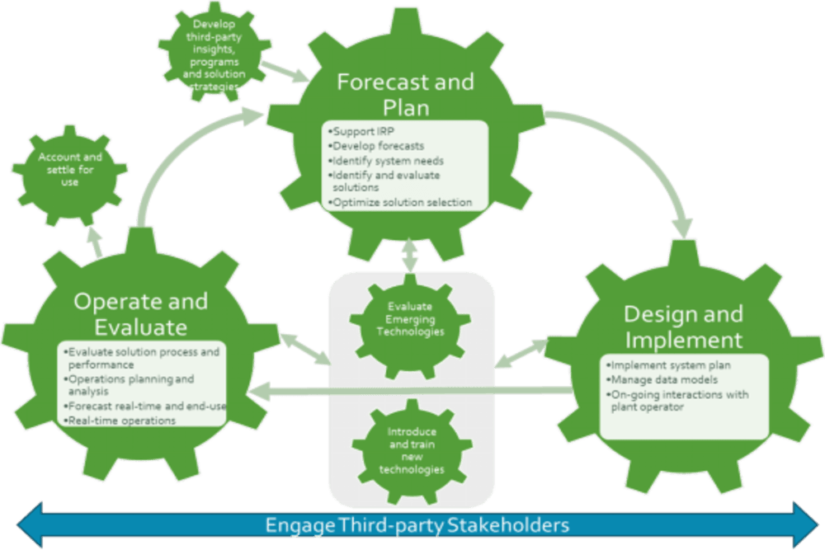
Let’s distill the information about Renewable-Aware Operations (RAO) and its significance:
Renewable-Aware Operations (RAO): This term refers to strategies and practices that consider the impact of renewable energy sources (such as solar and wind) on utility operations. RAO aims to optimize the integration of renewables into the grid, ultimately benefitting the environment, economy, and grid reliability.
Who cares? Everyone should! Understanding and adapting to RAO principles benefits utilities, regulators, and consumers.
What T&D business functions are impacted by renewable energy integration?
Spoiler alert! They all are…
Here’s a simplified look at how T&D utilities plan and operate. The reality is extremely complex, as it requires keeping all stakeholders informed and successfully running the utility’s core business.
For more information, stay tuned for Dr. Vadari’s next eBook, “Revamping T&D Utilities: The Era of Renewable-Aware Operations.”

©2024 Modern Grid Solutions
Designed & Maintained by Team Mango Media.
